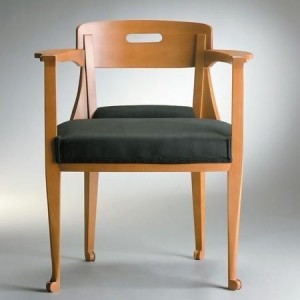The standard rap on Art Nouveau, as I remember from my student art history books, is that it was a short-lived (roughly 1890-1905) hiatus between the historic revival styles of the nineteenth century and the true-blue modernism of the Bauhaus. Art Nouveau was largely pooh-poohed,, written off as an aesthetic dead-end that sprang full-blown from the (feverish) artistic imaginations of architects and designers such as Antonio Gaudi, Victor Horta, Hector Guimard, the young Peter Behrens, Louis Comfort Tiffany and (though he is usually not included in this company), Louis Sullivan. The problem for art historians is that the sinuous decorations of the style obviously have little to do with the abstract minimalism of the Modern Movement. Thus the judgment that Art Nouveau is trivial and jejune, merely a passing, hence superficial, fashion. Seeing the marvelous Henry van de Velde interiors in Ghent’s Design Museum, I am not so sure. Short-lived the movement certainly was, but did it really lack the aesthetic means to develop or was it simply supplanted by Bauhaus modernism, which must have appeared a better fit for a chastened post-World War I world.

